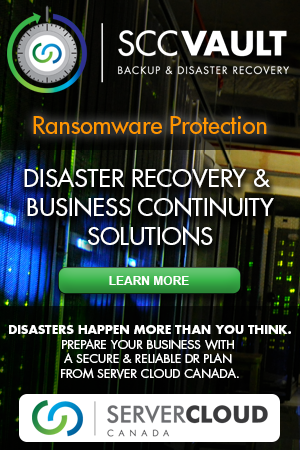IT resilience is a critical yet often overlooked aspect of disaster planning. A resilient organization is not only threat ready, but consistently monitors their network, notices a breach faster, and is able to resolve a problem before customers even notice. Learn what it means to be IT resilient and how to increase your organization’s resiliency.
What is IT Resilience?
Gartner defines IT resilience in a two-fold manner: Confidentiality and integrity assurance regarding sensitive business assets as well as fast, consistent delivery and availability of IT services. In other words, no outages or service interruptions, no lost or stolen data.
When your business can respond to disruptions so quickly that your customers or end users do not notice anything wrong, you are resilient. While service disruptions are a natural side effect of doing business, IT resilient
businesses have systems in place that allow them to overcome obstacles and provide service despite disruptions.
IT resilient organizations also have clear, comprehensive policies to guide all employees in providing service and mitigating problems. This way, everyone knows what to do when a specific incident occurs. They can quickly take the right action.
How to Evaluate and Improve Your IT Resilience
There are seven key components of effective IT resilience. By taking stock of these components at your organization, and focusing on boosting performance where you are underperforming, you can become more resilient.
Awareness – To develop policies, provide sustained service, and protect business interest, you must have knowledge and awareness. This including knowing what normal business requirements are, understanding dependencies within the IT system and recovery requirements for system components, and knowing how service disruptions affect all interconnected parts. If you don’t know how it all works together, how can you plan to fix things or effectively monitor for threats?
Protection – Protective measures exceed mere access control or physical control, such as a data center security system. Protective measures decrease the risk of system failure, including single point of failure. Load balancing and redundancy protect the system from failure, as does identifying what systems are key to business processes and must be prioritised.
Discovery and Detection – The sooner you discover an issue, the faster it can be resolved. Alerting systems provide immediate notification to IT staff, who can prioritise system repair.
Preparedness – When your team has detailed plans in place for remediating the effects of a service disruption, everyone can act together to resolve the situation before clients notice a problem. Elements of preparedness include failover for systems or components and setup of essential processes so they can function well even if there’s a temporary break in service.
Recovery – An effective, routinely-tested recovery plan is essential to recovery services and operations to your “business as usual” levels with minimum data loss and disruption of service. Recovery plans can serve as benchmarks for your team to measure their progress from the current state of things to fully resilient.
Diagnose – After an incident, do you conduct a review to figure out what went wrong and how to prevent a recurrence? If you are not examining the root causes of service disruption, you cannot be truly resilient. Diagnosing is a continual process that helps not only IT but the business as a whole to understand their risks, take preventative actions, and improve their positioning.
Improvement – A truly resilient business takes these seven factors into account and develops a culture of improvement or refinement, always striving to better protect the business.
Why the Cloud Improves IT Resilience
The cloud infrastructure makes it easy to increase resilience, even if your organization is on a tight budget for technology. Cloud-based backup and disaster recovery are not resource-efficient and budget-friendly, so you can get the services you need at a price you can afford. Cloud offerings come standard with near-zero downtime, so disruptions in service no longer affect your business.
Hybrid and private cloud environments give you greater control over speed, performance, security, and compliance, so you can be fully resilient.
When you move your IT to the cloud, you’ll enjoy a more resilient and simpler system. Your cloud supplier acts as a single point of contact who delivers service, fixes problems, and takes decisive action in times of performance interruption. Now, there’s no longer a question over roles and responsibilities in a crisis, such as a data center outage.
The SCC Difference
Server Cloud Canada owns and operates one of Canada’s largest distributed cloud based infrastructures, offering clients of all sizes and complexities a means of transitioning on premise equipment and platforms to a fully redundant secured national cloud based hosted environment. Our team of professional engineers are trained and experienced in information technology, data evolution, and infrastructure optimization.

How DRaaS Improves IT Resilience
Disaster recovery as a service, or DRaaS, is not merely replication of data for a redundant strategy. DRaaS evaluates the size and scope of the data requiring protection and selects the best DR solution to preserve production workloads.
For instance, DRaaS can continuously replicate applications, data, systems, and infrastructure. This way, your business can be up and running mere minutes after a system failure. This type of active replication ensures resilient systems through continuity of service. It also reinforces your IT performance through failover and failback processes.
Taking into consideration the costs savings of a cloud-based approach, DRaaS is less costly and less resource-intensive that replication a production environment to guard against emergencies.
While there are many cloud providers, not every provider is experienced with DRaaS. It’s key to work with a trusted provider who can develop a DR plan that not only meets your needs but addresses the service levels you offer your customers.








Leave a Reply
Want to join the discussion?Feel free to contribute!